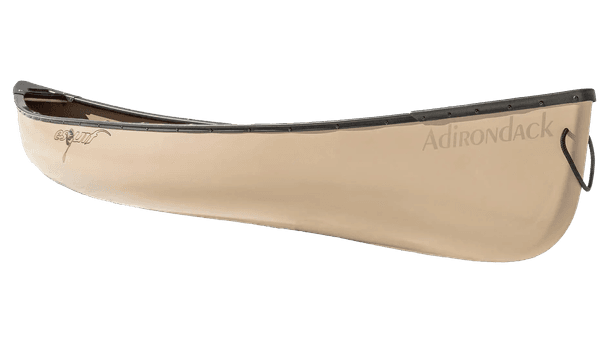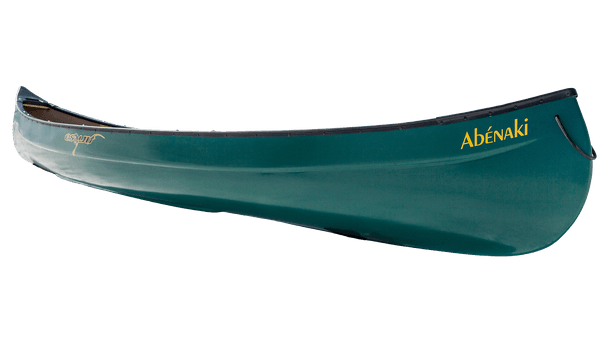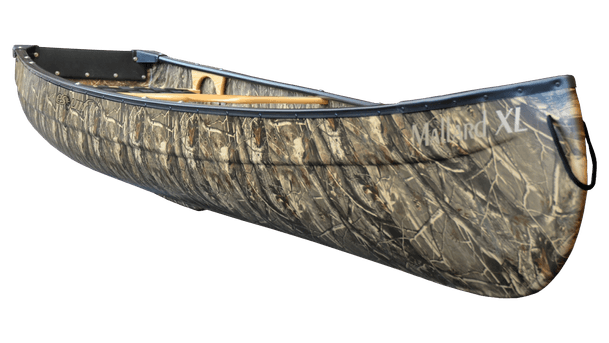- Home
- Gear & Reviews
- Sea-1
Sea-1

Sea-1 Options
Sea-1 Description
The Sea-1 is a canoe brought to you by Clipper Canoes. Read Sea-1 reviews or submit your own review to share with the paddling community. Check out a few other canoe recommendations below or explore all canoes to find the perfect one for you!
Clipper Canoes
Sea-1 Reviews
Read reviews for the Sea-1 by Clipper Canoes as submitted by your fellow paddlers. All of the reviews are created and written by paddlers like you, so be sure to submit your own review and be part of the community!
Quality: 10/10. This boat is…
OK, before I go into the virtues of this boat, first, you have to know why you would want a decked expedition canoe. Its about the seaworthiness. Perhaps you are in a kayak but you need something more comfortable, less confining, or perhaps more cargo capacity. The expedition canoes, are, well, CANOES. The seat is higher off the floor. You best paddle them with a single blade. Gone are the numb toes, sore back, aching wrists of the kayak. Expedition canoes are fast and easy to paddle. No corrective strokes needed, no sit and switch. Get away from the thought that a double blade paddle makes it easier to control the boat. A RUDDER makes it easier to control the boat, and you aren't swinging around that big stick in the wind. Every stroke is a power stroke. Fast and efficient, and EASY. A newbie in a expedition canoe can leave behind those poor souls who paddle in the wind in their solo, open, non-ruddered boat. With no frustration in the wind nor concern about the waves.
Seaworthiness:
You aren't going to swamp this boat in any kind of conditions a sane person would consider "paddle-able". you won't be windbound. You won't find yourself stranded if the wind picks up and the waves approach or exceed four feet high. You just paddle home.
Ok, that said, all this praise of expedition boats can be heaped on the Clipper Sea 1, but also the Sawyer Loon, Mad River Monarch, and Kruger Sea Wind. And the Superior Expedition. See my reviews for those boats as well.
The boat is big. However, it paddles easy and much like a smaller canoe. Actually easier. Don't worry about its size on the water, you won't need to. Easy to control, and fast.
If you are looking at getting out of a kayak, or looking for a quality canoe that is seaworthy and fast, here it is. If you really want to have a blast, put a Falcon 1 meter sail on it. This boat really excels in this department. The hard chines and straight tracking make it the best sailing decked expedition canoe out there, bar none.
I'm a fan of the Kruger designs. I like to consider the Clipper the Canadian version of the expedition canoe. I think it is equal to the Krugers in many aspects. Except for the price. Grab one up NOW when the Canadian dollar is weak! you can get one for about half the price of a Kruger Sea Wind.
Ok, the Clipper is NOT a Kruger and does have a couple drawbacks, hence my 9/10 score. One, the hull is a V bottom, and it is a wide, 28" hull. With the rudder pedals mounted to the sides, MY feet are all splayed out, as my heels slide to the middle of the hull. Might not be a problem for you, but it was a non-starter for me. I put on stronger Yakima rudder pedals and tracks, and installed aluminum rudder pedal extensions. I added a closed cell foam "floor" that I laminated together, to give my heels a nice, flat, soft surface. No now my heels are more towards the middle of the boat and my feet aren't splayed out to reach the rudder pedals. My legs are closer together. I padded the edges of the cockpit where my knees are. After padding the seat with closed cell foam, and adding a Molle 2 belt as a backrest, the boat is now really comfortable and I can really "lock in" when dealing with waves and wind. And I can really put the power to the hull.
The cockpit is more confining than a Kruger. It is narrower in front of the paddler, and since my knees are closer together than in the Kruger, it is harder to get to gear when paddling. At the same time, there is a lot less "under deck" area in the Clipper than there is in a Kruger. The boats are the same size and approximate volume, but the gear stowed in a Clipper is a lot more accessible and easier to load and unload. You can easily fit a huge pack behind the paddler. The paddling position is about 18" aft of the position in a Kruger...meaning that you should use all that space in front of you for gear as well. The sliding seat is a good alternative if you don't want to pack for and aft so much...just slide the seat forward for trim.
The only other "con" of the Clipper is really a wash. It does NOT have the wonderful seat/portage yoke combo of the Monarch and Sea Wind. You can attach a nice carry yoke to it, but you need to use bolts and wing nuts... The seat height is adjustable only with tools. Of course the Monarch and Sea Wind seat is instantly adjustable for height and instantly flips over for portaging. I don't see this Clipper going to the BWCA/Quetico with me. Of course, the sliding seat of the Clipper is great for adjusting trim, something the Monarch and Sea Wind you have to accomplish by moving gear around in the boat. It is a tradeoff. Now realize the seating arrangement in Loons varies. Some factory arrangements slide, some don't. All are adjustable for height, not instant and may require tools depending on the setup. Lots of folks just scrap the factory setup in a Loon in favor of a Kruger setup, as I have done on my Loon. But the Clipper, I'm probably going to keep the sliding seat setup. It works well for me at its lowest setting, especially since I put about an inch of padding on the seat.
The hard chines and lack of rocker make the Clipper track straight as an arrow. So much so, the little Feathercraft solo kayak rudder blade is not up to the task, especially for sailing. I installed a Feathercraft tandem kayak rudder blade and all is well. The wonderfully straight tracking makes the Clipper sail like a dream, when the Kruger tends to skate sideways in a beam reach, without the benefit of a centerboard, leeboard, or dagger board.
The swept back bow of the Clipper never gets leaves, sticks, or aquatic vegetation stuck on it. While I really like the looks of the vertical bows of the Epic kayaks vs. the old Greenland style bows...there is a lot to be said for a swept back bow!!
So, I love the boat. Because of its better behavior under the sail, it is my go-to sailing expedition canoe, and I'll race it in the Everglades Challenge over the Kruger. It won't head to Quetico with me though. But if you
1) want to get out of a kayak, and/or
2) want a most-seaworthy canoe that is easy to paddle and control, then you need to look at a decked expedition canoe.
The Clipper Sea 1 is an option that is probably a lot more economical for you. You can order one and have it in a month or two. It has a slightly different niche than the Kruger. In any case, just get a decked expedition canoe, any decked expedition canoe!! Just know, as with any canoe, no one canoe is perfect for everything. That is why I have 5 in my garage.
I have owned a sea 1 for…
Huge capacity, very stable…
On April 21st, 2009 I drove…
A little background is needed at this point. I am 51 years old and have been paddling something since I was 10 years old. I raced Sea Kayaks for several years and have owned many different canoes and kayaks. I was paddling a Wenonah Advantage and a Wenonah Prism as my solo canoes last year. These are great canoes but I had a few situations that convinced me I wanted a decked canoe. Keep in mind I am not an Expedition Paddler. I have never been to the Boundary Waters. I like to take very long day paddles of 10 to 40 miles. I love to take photos of wildlife and videos of my trips.
I live in Streamwood, IL, which is a NW suburb of Chicago. My closest paddling destination is the Fox River. In NE, IL the Fox is a series of many low head dams creating some narrow lakes through the suburbs of Chicago. The Windy City has a reputation of high winds. This can be a problem in a traditional canoe. A 20 mph wind could be 30 mph as it’s funneled through the canyon of the Fox. Also the upper Fox River has one lock on it which connects a long unobstructed stretch (20+ miles) of the river with an area called The Chain O’Lakes which is a favorite destination for power boaters in the area. This long stretch of river is lined with homes. Almost every home has a boat parked on the river. Many of these boats would be more at home in Lake Michigan than a narrow river. The wakes from these gargantuan boats are very dangerous, to say the least. The weather here can change in an instant. We can have bright sun one minute and then hurricane force winds and rain the next. Finally, I enjoy winter paddling.
So let’s talk about how the Clipper Sea 1 deals with these situations. Weight: I have not weighed my Sea 1 yet but I bet it’s very close to the 55 pound advertised spec. I load it on and off of my tall Pontiac Aztek with ease. In gripping the lip of the cockpit just in front of the seat, I can lift the Sea 1 over my head easily. I have a Yakima old style kayak saddle set that works nicely to carry the boat upright. Upright is important because the Sea 1 is not designed to be carried upside down like a regular canoe. I did order the optional yoke that makes the Sea 1 easy to portage. The yoke mounts when needed with a single bolt and thumb screw on either end just in front of the seat. I have not used it yet but I plan to find a way to do some bigger trips and know it will come in handy.
I chose the Sea 1 over the Superior Expedition, the Bell Rob Roy, or the Kruger Sea Wind for several reasons. One is the deck is only 12 inches tall (the Superior is 14 inches) so the wind has little affect on an empty boat. I mostly day paddle so I carry very little weight with me. I’ve never run into a situation where I had to get off the water because of winds, even winds up to 30 mph. Also the hull design of the Sea 1 has almost no rocker and the stern really bites hard. The seat can be slid forward or back depending on the direction of the wind. (The Kruger, Bell and the Superior seats will not slide forward or back.) These design characteristic make the Sea 1 track like it’s on a rail. For those times I’m running upstream in rapids, hopping eddies or the wind is too much to handle or a big following sea condition, the Sea 1 has a Feathercraft Rudder. I also use the rudder when I’m shooting photos or video. I have used Feathercraft rudders for years on my Seda Glider and Impulse kayaks. The Feathercraft design allows you to pull the rudder down unlike the Kruger or the Superior. (They use gravity so if the rudder sticks you have to get out of the boat to put it down. The Rob Roy has no rudder.)
I paddle with the rudder down very little. The Sea 1 doesn’t need it because of its superb tracking. Plus the rudder’s drag slows me down about .5 mph. The Sea 1’s bow has a lot of flare to it above the waterline making it a very dry ride when pushing through wind driven waves and large boat wakes. It’s much fuller than the Kruger Sea Wind in the bow.
I ordered the optional side deck rigging which was a good choice. The deck bow and side deck rigging holds the spare paddle firmly in place so it doesn't wash out of its place when driving through waves. It works perfectly to hold the handle of the spare paddle securely with a bungee cord on a simple hook. If you dropped a paddle and need the spare in a hurry this rigging design could be a lifesaver.
The Sea 1 is very fast design! At the waterline, with me (200 lbs.) the Sea 1 is only 23" or 24" wide. Not bad for a hull that is 28" wide total. This speed is important to me because of all the boat docks along the Fox River shore. On an upstream paddle I can't get out of the current by paddling next to the shore. (almost all of my paddles are upstream and back)
On May 17th, 2009 I raced the Clipper Sea 1 in the annual Des Plaines Marathon. (http://www.canoemarathon.com/) The race is 18.5 miles long with 2 portages around low-head dams on the Des Plaines River in the North Suburbs of Chicago, IL. I went through all the photos after the race to see what kind of boats were in my class, and who beat me and who I beat. After reviewing the results I'm feeling pretty good! I even beat a few boats I shouldn't have beat. I do not run a fast paddling cadence. My cadence is around 40-45 strokes per minute which is slow compared to the average marathon racer which paddles at 50-60 strokes per minute rate.
The optional spray skirt does its job well. The Sea 1 has no cockpit rim lip so the spray skirt is held in place by 41 snaps. Don't let the number of snaps fool you. I don't use the spray skirt every time I paddle. The 42 snaps lock on very quickly. The spray skirt is in 2 pieces and is connected by a wide strip of Velcro on either side of me to each other. This split allows for easy entering and exiting of the canoe and gives you an option to tuck the ends behind and in front of you for comfort. The skirt covers me up to my armpits if needed. It is held in place by shoulder straps, 2 bungee cords sown into the chest and back of the skirt at the edge to close it up firmly. The spray skirt keeps me just as warm and dry as a kayak spray skirt but it's a lot easier to load and unload gear than kayak hatches. Keep in mind the cockpit is 9.5 feet long and 22 inches wide at its widest point. There is a bulkhead just behind the seat. This bulkhead holds up the front edge of the spray skirt to keep any water from pooling on the skirt. It also keeps any water under your feet from running back into the rear of the canoe keeping your gear dryer.
I like to winter paddle when the ice lines the shore. The Sea 1 has a bow like a kayak that is tapered allowing you to slide up onto the ice with ease. The Kruger Sea Wind has a canoe like bow that is very vertical. I believe it's not designed to slide as easily up onto the ice. To me this was a big deal. I have many times started out on a winter paddle where the shore was clear of ice only to return hours later and have the shifting ice blown or washed into shore leaving me no choice but to muscle the boat up and onto the ice to reach the shore. For winter paddling I feel this difference could also be a lifesaver at the right time. At the least the tapered bow will save the finish on it from hard impacts.
I mostly do day paddles. This doesn't mean I leave everything home when I paddle. Like yesterday I spent 8 hours in the Sea 1 without setting foot on shore. I was able to do this because I can reach everything I need without getting out of the boat. You can't do that in a kayak. I have a milk crate in front of me with binoculars, 2 extra water jars, handy wipes, sun lotion, and a folding lounge chair. Under me I have my cell phone in a waterproof case, a GPS, a big sponge, a pee bottle, and a throw rope. Behind me in the rear of the canoe I have a soft sided cooler with my Jimmy John's sub sandwich and a dry-bag with my wallet and glasses, a rain jacket, the spray skirt and an extra water bottle. I ordered the optional wilderness lash kit which comes with 4 tie-downs bonded to the bottom of the hull and 2 nylon straps crisscrossing the rear of the Sea 1. This is a great design to keep gear secure.
The seat is adjustable by sliding it forward and back. There is no lock, nor does it need one for most situations, I believe. The seat travel is about 12 inches. This makes the boat easier to get in and out of as well as allowing you to move around more to reach your gear while underway. The seat also can be adjusted up and down. I leave my seat adjusted to the middle position which is about 8 inches off the lowest point in the floor. The seat can be dropped down to the bottom set of mounting holes. (about 1.75" down). This might be good if you were in extreme conditions or if you wanted to just use a kayak paddle instead. The top set of mounting holes for the seat are about 1.75 inches higher. I have never used these but I can see if you were loaded with lots of gear and on flat water the upper position would be ideal. One thing about changing the seat height, you'll need a couple of tools to do this so it's best to adjust this before you leave on your trip.
The cockpit shape tapers in where your knees are. This feature allows you to brace just like a kayak. However, in order to do this comfortably you'll need to mount the seat in the lowest position. I can brace under the deck in the middle seat height position but I wouldn't want to stay in that position all day. I do very little knee bracing under the deck. Instead I just use the sides of the cockpit rim to brace. I plan on adding some padding both on the side of the rim and under the deck to increase my comfort when I get the time.
I don't want you to think I don't like the Kruger Sea Wind, the Superior Expedition or the Bell Rob Roy. In fact, the opposite is true. If my primary paddling destination was different, I would have chosen the decked canoe that most closely matched up to the conditions I would most often be exposed to. All 3 boats have taken the canoe to a level few people can comprehend. In fact, because these canoes are so state of the art, I can't understand how dealers sell so many kayaks. Why would anyone want to sit so low to the floor of their paddle craft if they didn't have to? Also the versatility of a single blade canoe paddle allows you to mix up the muscle group you’re using so you can paddle much more comfortably for a longer period of time. The weight of a canoe paddle isn't half the weight of a kayak paddle but its close. If you calculate strokes per mile by the weight of the paddle you'll be lifting hundreds of pounds less in a day using a canoe paddle over a kayak paddle. This means when it's time to get out of the boat at the end of the day you're less exhausted.
I want to say a word about my experience in purchasing from Clipper Canoes. Clipper has maybe one dealer in the USA. Clipper is located in Canada. I thought this was going to be a problem but in fact it was an advantage. I watched the exchange rate and had them bill me on the day the Dollar was the strongest, I felt, saving me hundreds of dollars.
I was a little afraid of the shipping part. I know from experience that boats often get damaged during shipping. However, packing job done by Clipper's staff was almost bombproof! They were so meticulous I would never be concerned about shipping.
Clipper Sea 1s are not a mass-produced boat. Each one is laid up by hand and made to order. Mine took about a month from the time I ordered until I had it in my garage. I ordered before the season started. If you order during the season be prepared to wait a little longer. There could be a waiting list.
The workmanship was fantastic. The finish was a beautiful red Gel-Coat with some sort of fleck in it. Just yesterday I saw a guy jumping and waving me down from shore. I paddled over to see what the problem was. He flagged me down to tell me he'd seen me paddling by his house before and wanted to tell me how beautiful my boat looked.
The customer service was outstanding. I had lots of questions and the sales staff was very understanding and answered them all patiently. Clipper even made several suggestions that I'm glad they did.
If you have not considered a decked canoe or even heard of such a thing I would reconsider. After hundreds of miles paddling it I'm glad I chose the Clipper Sea 1.
You can watch some of my adventures on Youtube.com by typing "paddlingfan1" in the Youtube Search Bar.



